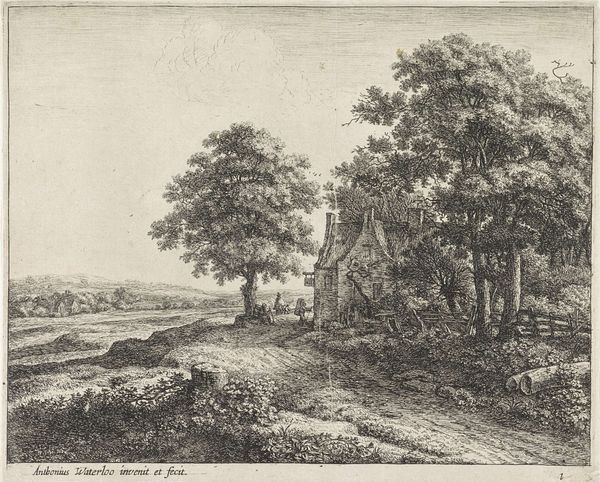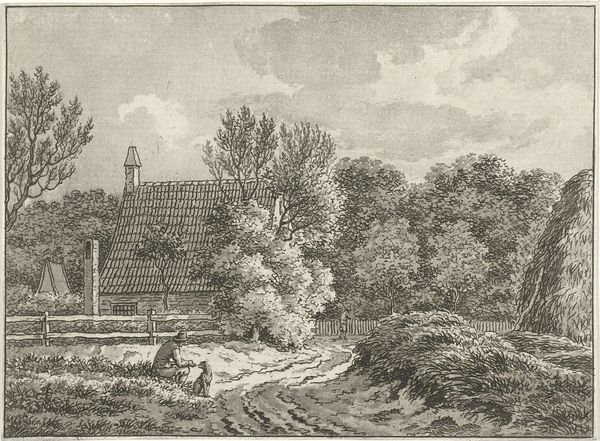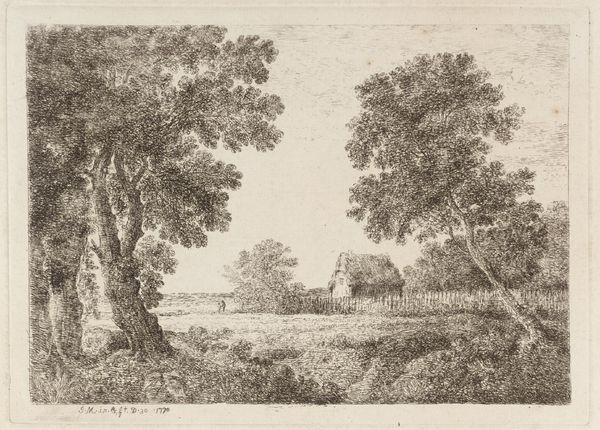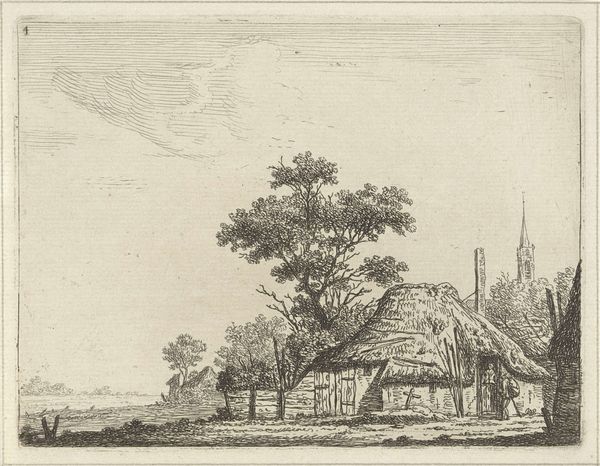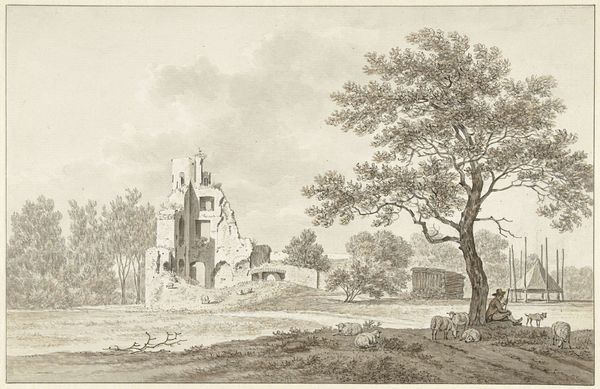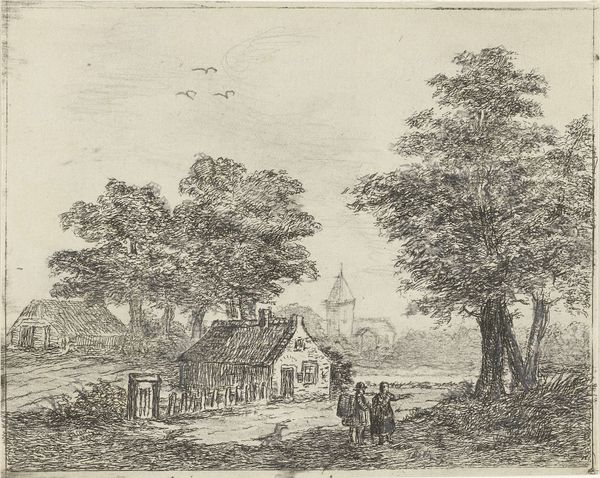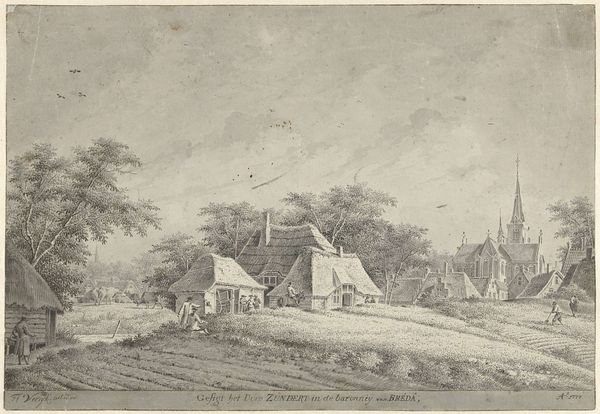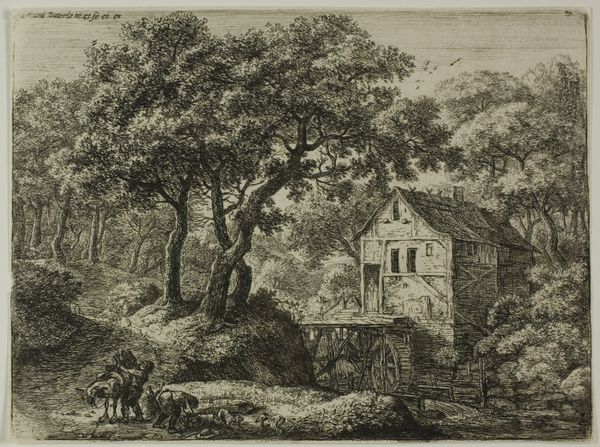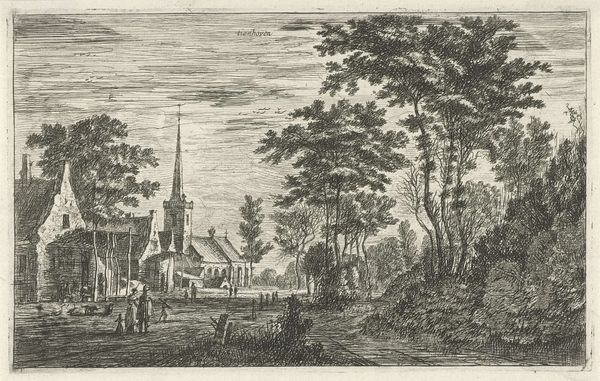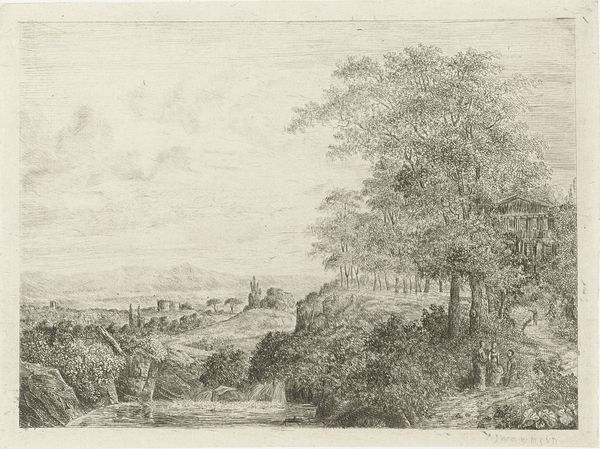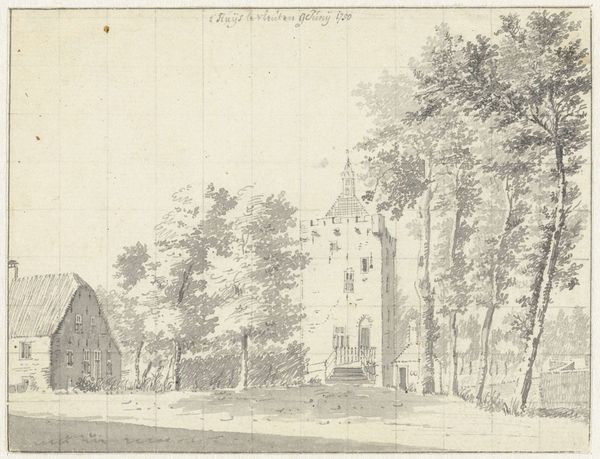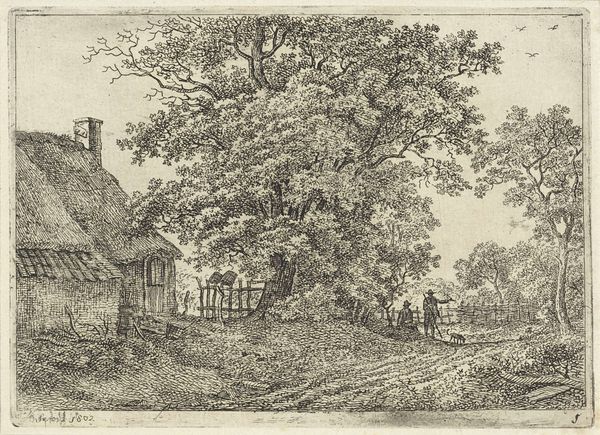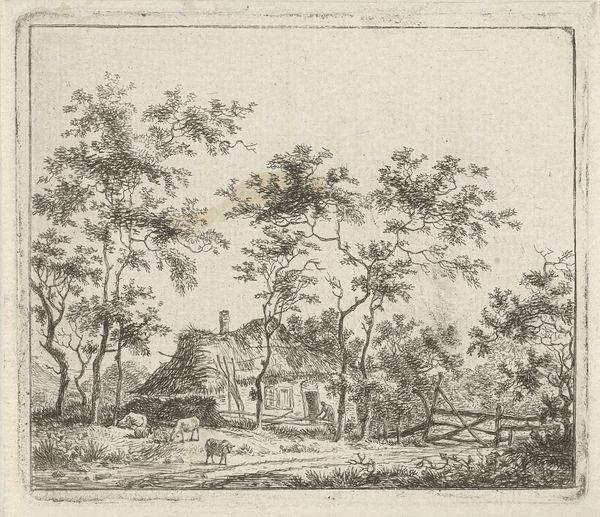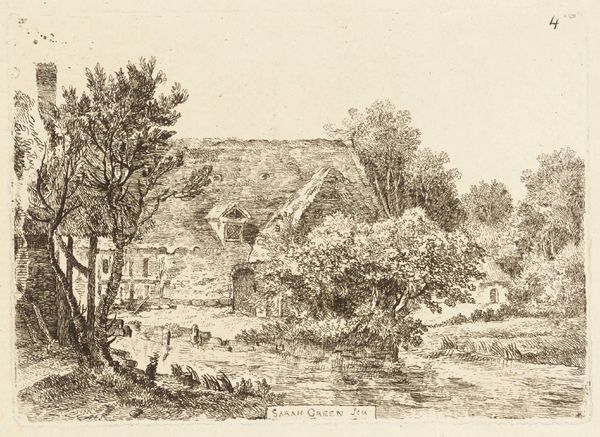
print, etching
#
aged paper
#
light pencil work
# print
#
pen sketch
#
etching
#
pencil sketch
#
old engraving style
#
sketch book
#
landscape
#
personal sketchbook
#
pen-ink sketch
#
pen work
#
sketchbook drawing
#
realism
Dimensions: height 124 mm, width 160 mm
Copyright: Rijks Museum: Open Domain
Adrianus Serné created this etching of two houses along a road; we don't know exactly when, but probably in the early 19th century. The character of an etching is so dependent on the labor involved. An etcher like Serné would have covered a copper plate with a waxy ground, then drawn into it with a needle to expose the metal. The whole plate was then immersed in acid, which bit into the lines, creating grooves that would hold ink. The printmaker then burnishes the plate to remove any surface residue before applying ink to its surface with a roller or dabber. The plate is then pressed against paper, resulting in the transfer of ink from plate to paper. The incredible detail here speaks to Serné's patience, his careful observation, and his trained hand. But the subject is equally eloquent: humble buildings, thoroughly embedded in the landscape. It is a testament to the virtues of the everyday. An etching like this invites us to see the world through the eyes of those who made it with their hands.
Comments
No comments
Be the first to comment and join the conversation on the ultimate creative platform.
